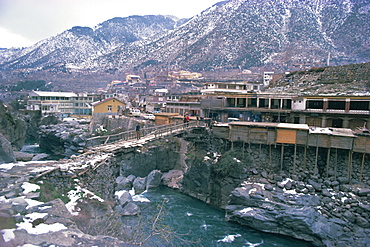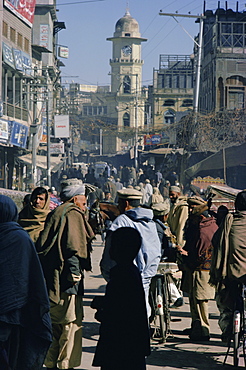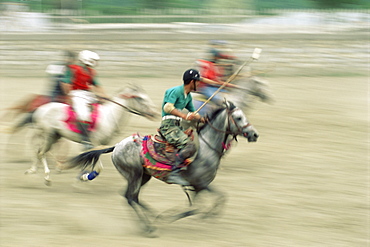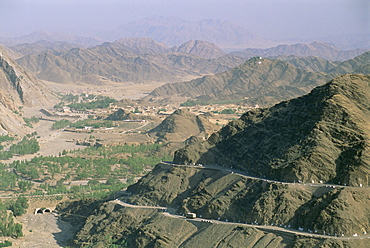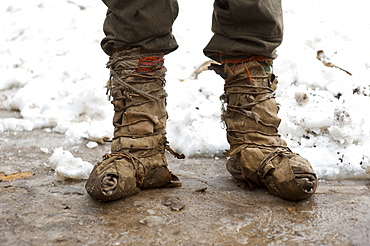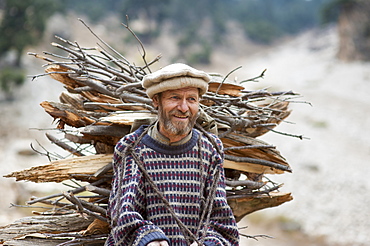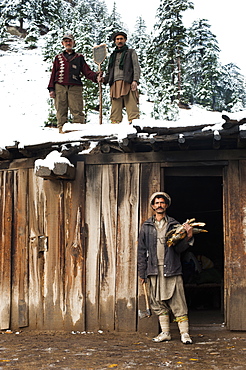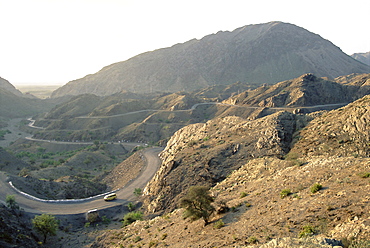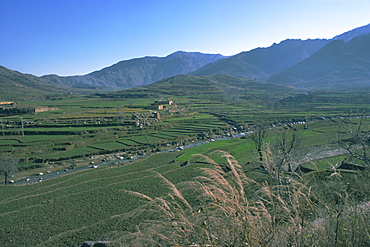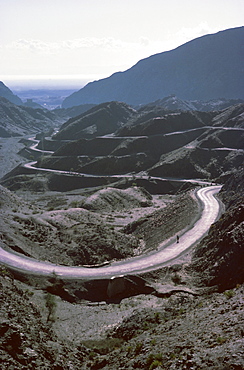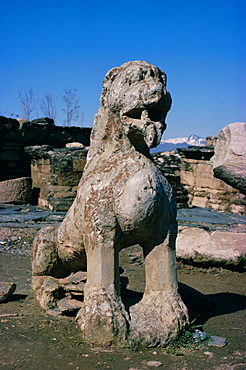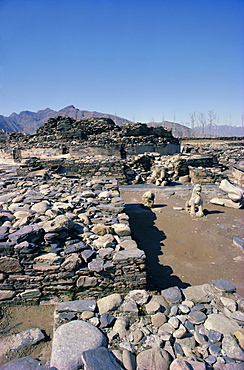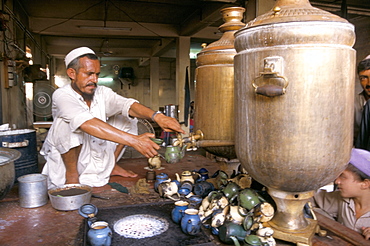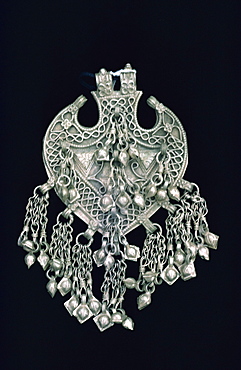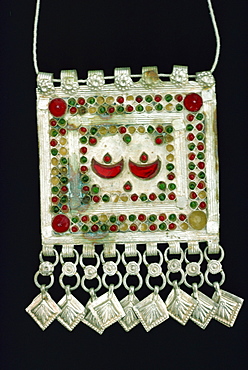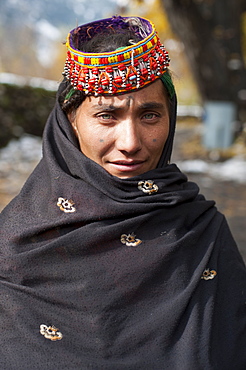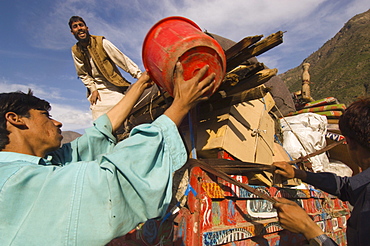Results
21 results found

A Kalasha man carrying firewood, Kalasha valley, Chitral, North West Frontier Province, Pakistan, Asia

A girls face is decorated with henna in an unusual pattern, North West Frontier Province, Pakistan, Asia

Kalasha woman from Kalasha valley wearing traditional dress, North West Frontier Province, Pakistan, Asia
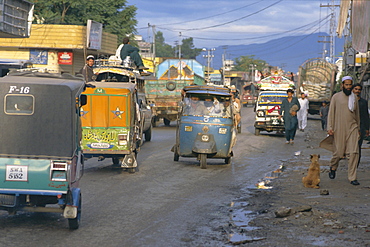
Three wheeled vehicles on main road, Mingora, Swat valley, North West Frontier Province, Pakistan, Asia

An adolescent Pashtun girl shields her face as she carries water through the streets of the Meira camp for earthquake survivors, Northwest Frontier Province, Pakistan. The conservative code of the Pashtun tribe of the area dictate that girls must cover themselves, including their faces, after their first period. The crowded life in the camp has made such rules difficult to follow. The Meira Tent camp (also called Mera, or Maria camp), is located on the Indus River in the Battagram district. The camp, the largest for displaced people in Pakistan, hosts over 21,000 earthquake survivors, primarily from the Allai valley in Pakistan's NWFP, one of the areas worst-hit by the October 8, 2005 earthquake.
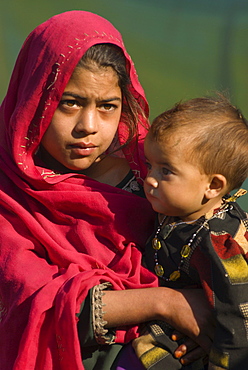
A Pashtun girl holds her younger brother, in the Meira camp for earthquake survivors in the Northwest Frontier Province, Pakistan. The Meira Tent camp (also called Mera, or Maria camp), is located on the Indus River in the Battagram district. The camp, the largest for displaced people in Pakistan, hosts over 21,000 earthquake survivors, primarily from the Allai valley in Pakistan's NWFP, one of the areas worst-hit by the October 8, 2005 earthquake.

A Pashtun man stands outside the Cuban hospital in the Meira camp for earthquake survivors, NWFP, Pakistan. The Cuban government sent 30,000 doctors, nurses and other personnel to set up field hospitals throughout the earthquake affected area. The Meira Tent camp (also called Mera, or Maria camp), is run by the Pakistani army like a small city, and is located on the Indus River in the Battagram district. The camp, the largest for displaced people in Pakistan, hosts over 21,000 earthquake survivors, primarily Pashtuns from the Allai valley in Pakistan's NWFP, one of the areas worst-hit by the October 8, 2005 earthquake.

A girl in the Meira tent camp for earthquake survivors stands on top of a pile of her family's belongings as they wait for transportation from the camp, where they have spent the winter, back to their devastated mountain village, in the NWFP, Pakistan. The Pakistani army, which runs the camp, has mandated that the camps be cleared by early April, despite the fact that many families are afraid or unprepared to return to their devastated homes. The Meira Tent camp (also called Mera, or Maria camp), is located on the Indus River in the Battagram district. The camp, the largest for displaced people in Pakistan, hosts over 21,000 earthquake survivors, primarily from the Allai valley in Pakistan's NWFP, one of the areas worst-hit by the October 8, 2005 earthquake.

In the Meira camp for earthquake survivors, two Pashtun men sit by piles of family possesions, waiting for the truck which will take them from the camp, where they have spent the winter, back to their devastated mountain village, in the Northwest Frontier Province, Pakistan. The Pakistani army, which runs the camp, has mandated that the camps be cleared by early April, despite the fact that many families are afraid or unprepared to return to their devastated homes. The Meira Tent camp (also called Mera, or Maria camp), is located on the Indus River in the Battagram district. The camp, the largest for displaced people in Pakistan, hosts over 21,000 earthquake survivors, primarily from the Allai valley in Pakistan's NWFP, one of the areas worst-hit by the October 8, 2005 earthquake.
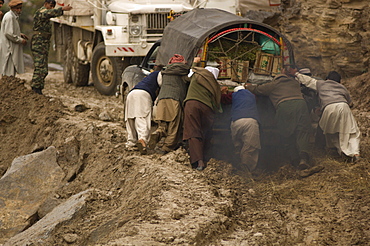
On the the road to the Allai Valley, men try to push a truck that is stuck in mud and landslide debris and which is blocking other trucks full of humanitarian aid and earthquake survivors returning to their mountain villages, Battagram District, Pakistan's Northwest Frontier Province. The region was one of the worst-hit by the October 2005 earthquake, and aftershocks and heavy rains continue to trigger landslides, which have hampered reconstruction efforts and the return of earthquake survivors to their mountain villages from the low altitude tent camps where many spent the winter.

On the the road to the Allai Valley, a Pashtun family carries luggage past trucks that are stuck in mud and landslide debris-the trucks are full of other families and their possessions traveling back to their mountan villages, Battagram District, Pakistan's Northwest Frontier Province. The region was one of the worst-hit by the October 2005 earthquake, and aftershocks and heavy rains continue to trigger landslides, which have hampered reconstruction efforts and the return of earthquake survivors to their mountain villages from the low altitude tent camps where many spent the winter.
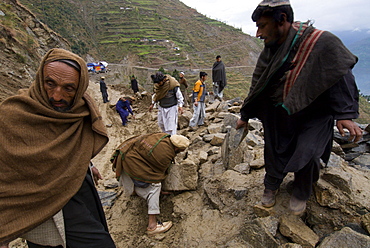
Pashtun men clear rocks from a landslide that is blocking the road to the Allai Valley, and preventing many trucks full of earthquake survivors and their possessions from traveling back to their mountan villages, Battagram District, Pakistan's Northwest Frontier Province. The region was one of the worst-hit by the October 2005 earthquake, and aftershocks and heavy rains continue to trigger landslides, which have hampered reconstruction efforts and the return of earthquake survivors to their mountain villages from the low altitude tent camps where many spent the winter.
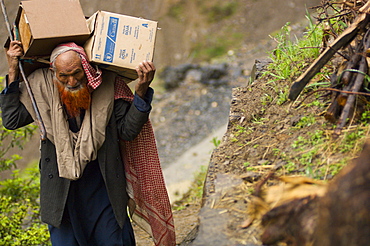
A Pashtun man returning home to his mountain home from a camp for earthquake survivors, carries boxes up a steep hill, in the Battagram District, Pakistan's Northwest Frontier Province. The Pakistan army has dictated that all camps for people displaced by the earthquake be emptied by early April, whether families want to return or not. The Battgram district was one of the worst-hit by the October 2005 earthquake, and aftershocks and heavy rains continue to trigger landslides, which have hampered reconstruction efforts and the return of earthquake survivors to their mountain villages from the low altitude tent camps where many spent the winter.
